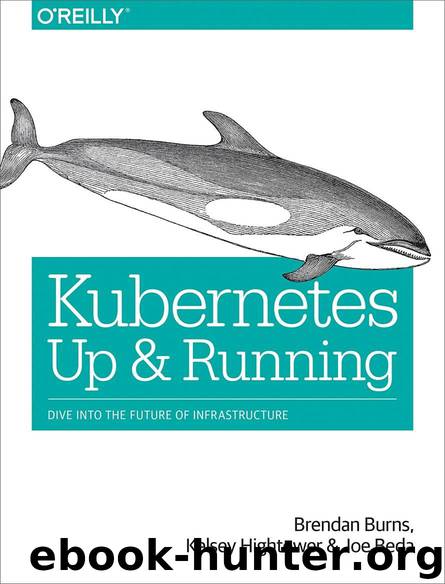Kubernetes: Up and Running: Dive into the Future of Infrastructure by Hightower Kelsey & Burns Brendan & Beda Joe

Author:Hightower, Kelsey & Burns, Brendan & Beda, Joe [Hightower, Kelsey]
Language: eng
Format: azw3
Publisher: O'Reilly Media
Published: 2017-09-07T04:00:00+00:00
DaemonSets require a unique name across all DaemonSets in a given Kubernetes namespace. Each DaemonSet must include a Pod template spec, which will be used to create Pods as needed. This is where the similarities between ReplicaSets and DaemonSets end. Unlike ReplicaSets, DaemonSets will create Pods on every node in the cluster by default unless a node selector is used.
Once you have a valid DaemonSet configuration in place, you can use the kubectl apply command to submit the DaemonSet to the Kubernetes API. In this section we will create a DaemonSet to ensure the fluentd HTTP server is running on every node in our cluster:
Download
This site does not store any files on its server. We only index and link to content provided by other sites. Please contact the content providers to delete copyright contents if any and email us, we'll remove relevant links or contents immediately.
Algorithms of the Intelligent Web by Haralambos Marmanis;Dmitry Babenko(16235)
Jquery UI in Action : Master the concepts Of Jquery UI: A Step By Step Approach by ANMOL GOYAL(9387)
Test-Driven Development with Java by Alan Mellor(7735)
Data Augmentation with Python by Duc Haba(7609)
Principles of Data Fabric by Sonia Mezzetta(7378)
Learn Blender Simulations the Right Way by Stephen Pearson(7294)
Microservices with Spring Boot 3 and Spring Cloud by Magnus Larsson(7137)
Hadoop in Practice by Alex Holmes(6587)
RPA Solution Architect's Handbook by Sachin Sahgal(6517)
The Infinite Retina by Robert Scoble Irena Cronin(6216)
Big Data Analysis with Python by Ivan Marin(5934)
Life 3.0: Being Human in the Age of Artificial Intelligence by Tegmark Max(5516)
Pretrain Vision and Large Language Models in Python by Emily Webber(4894)
Infrastructure as Code for Beginners by Russ McKendrick(4653)
Functional Programming in JavaScript by Mantyla Dan(4436)
WordPress Plugin Development Cookbook by Yannick Lefebvre(4382)
The Age of Surveillance Capitalism by Shoshana Zuboff(4245)
Embracing Microservices Design by Ovais Mehboob Ahmed Khan Nabil Siddiqui and Timothy Oleson(4148)
Applied Machine Learning for Healthcare and Life Sciences Using AWS by Ujjwal Ratan(4135)
